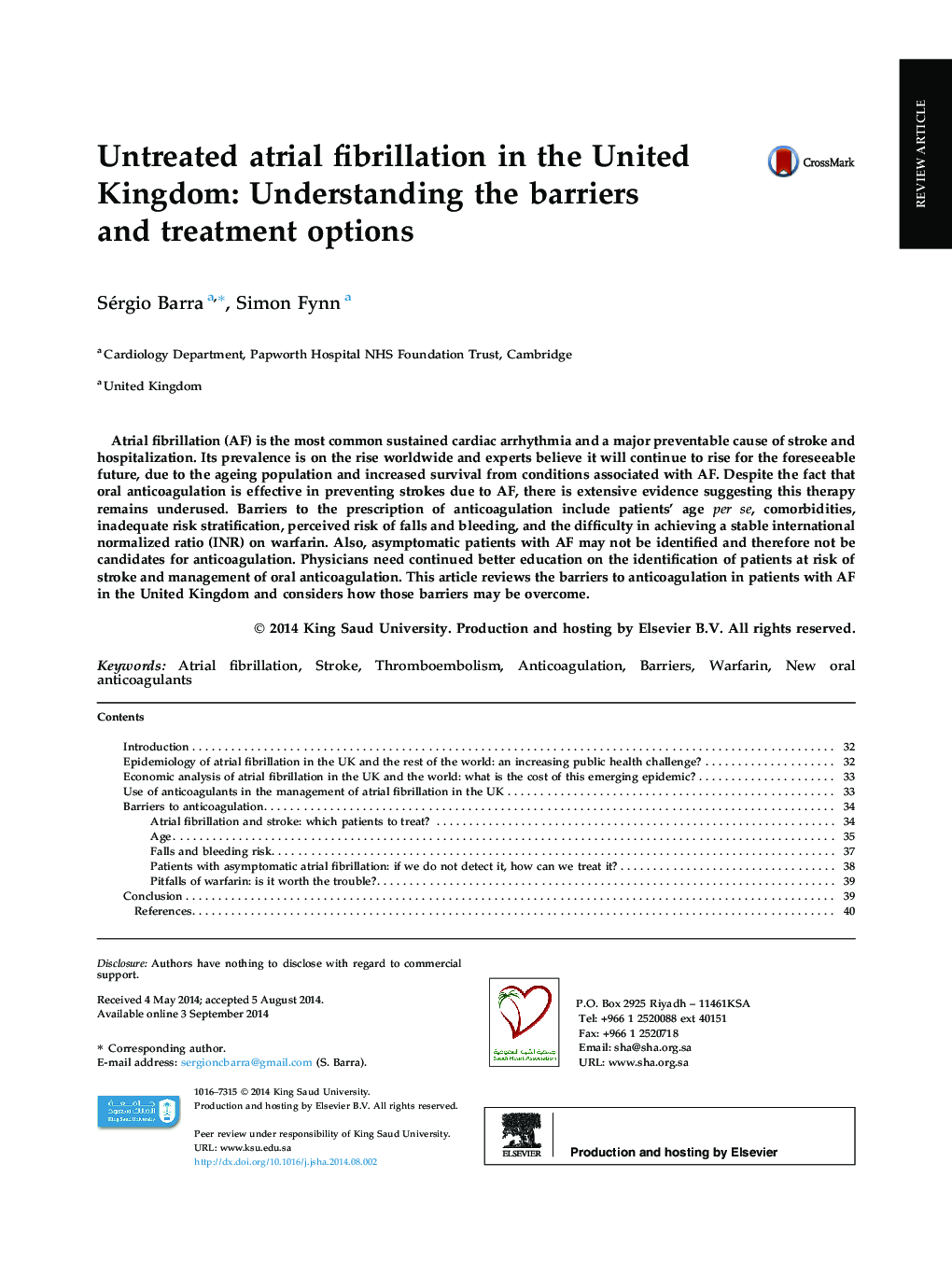| Article ID | Journal | Published Year | Pages | File Type |
|---|---|---|---|---|
| 2978087 | Journal of the Saudi Heart Association | 2015 | 13 Pages |
Atrial fibrillation (AF) is the most common sustained cardiac arrhythmia and a major preventable cause of stroke and hospitalization. Its prevalence is on the rise worldwide and experts believe it will continue to rise for the foreseeable future, due to the ageing population and increased survival from conditions associated with AF. Despite the fact that oral anticoagulation is effective in preventing strokes due to AF, there is extensive evidence suggesting this therapy remains underused. Barriers to the prescription of anticoagulation include patients’ age per se, comorbidities, inadequate risk stratification, perceived risk of falls and bleeding, and the difficulty in achieving a stable international normalized ratio (INR) on warfarin. Also, asymptomatic patients with AF may not be identified and therefore not be candidates for anticoagulation. Physicians need continued better education on the identification of patients at risk of stroke and management of oral anticoagulation. This article reviews the barriers to anticoagulation in patients with AF in the United Kingdom and considers how those barriers may be overcome.
